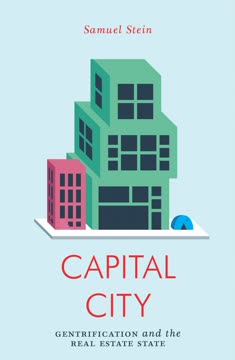Key Takeaways
1. Capitalism's Growth Strategy Centralizes Urban Real Estate
Through this process, the price of land becomes a central economic determinate and a dominant political issue.
Global shift. Capital is increasingly converging on urban real estate as a primary growth strategy. This trend is fueled by financial deregulation, low interest rates, urbanization programs, and the search for secure investment havens. Real estate now constitutes a staggering 60% of the world's assets, with housing comprising the vast majority.
Consequences. This centralization of capital in real estate leads to several critical outcomes:
- Gentrification becomes widespread, displacing long-term residents.
- Housing transforms into a globally traded financial asset, creating synchronized bubbles and crashes.
- Governments prioritize raising property values, often at the expense of residents' well-being.
The Real Estate State. The rise of real estate capital culminates in the emergence of the "real estate state," a political formation where real estate interests exert disproportionate influence over urban development, politics, and individual lives. This influence manifests at all levels of government, but is most pronounced at the municipal level, where physical planning decisions are made.
2. Planners Navigate Contradictory Goals in the Real Estate State
Planners manage the levers of urban change and make crucial decisions about land use, transportation, housing, the environment and more.
Conflicting mandates. Urban planners find themselves at the center of a complex dynamic, tasked with the contradictory goals of inflating real estate values while simultaneously safeguarding the best interests of residents. This tension creates an existential crisis for planners, forcing them to question whether they are merely wealth managers for the capitalist class.
Limited agency. Capitalism imposes strict limitations on planners who aim to alter the balance of power, particularly when it comes to private property and real estate. This makes it difficult to improve cities without inducing gentrification and displacement.
The planner's dilemma. Planners are often caught between their desire to create more beautiful, sustainable, and sociable spaces and the reality that their work often results in higher land prices, increased rents, and displacement. Without control over the land, planners struggle to deliver on their promise of a better society.
3. Gentrification is a Planned Process, Not a Natural Occurrence
Gentrification, then, is a political process as well as an economic and social one; it is planned by the state as much as it is produced by developers and consumed by the condo crowd.
More than economics. Gentrification is not simply a natural evolution of urban areas, but a deliberate process involving investors, developers, landlords, and wealthier residents. It requires the active participation of the state, which uses land use policies, tax incentives, and neighborhood initiatives to attract investment and desired residents.
State involvement. Planners play a crucial role in facilitating gentrification by:
- Luring producers with land use and tax incentives.
- Inviting consumers through race- and class-inflected neighborhood initiatives.
- Managing the levers of urban change to benefit organized capital.
From local to global. Planners have helped transform gentrification from a localized phenomenon into a global business model, shaping cities around the world to cater to the needs of real estate capital.
4. Rent Gaps and Value Gaps Drive Gentrification
Gentrification, he theorized, “occurs when the gap is wide enough that developers can purchase shells cheaply, can pay the builders’ costs and profit for rehabilitation, can pay interest on mortgage and construction loans, and can then sell the end product for a sale price that leaves a satisfactory return to the developer.”
Rent gaps. Gentrification is driven by the exploitation of "rent gaps," the difference between the current rents a property generates and the potential future rents it could command after renovation or redevelopment. This gap motivates speculators to invest in undervalued properties and displace existing tenants.
Value gaps. In addition to rent gaps, "value gaps" exist when a property's current use masks its potential income if it were given over to another activity. For example, converting factories into residential or commercial spaces can generate significantly higher rents.
Closing the gaps. Real estate developers and city planners work together to identify and exploit these opportunities, using housing, policing, education, and design strategies to close rent, value, and functional gaps, ultimately driving up property values and displacing long-term residents.
5. Cities Use Geobribery to Lure Real Estate Investment
Critics call this “geobribery”—the way planners use public finances to lure private investment into specific areas.
Tax cuts. Local property tax cuts are a primary tool used to attract and retain real estate investment. These cuts come in various forms, including those for renovation (e.g., J-51 in New York City) and new construction (e.g., 421-a in New York City).
PILOTs. Payment In Lieu of Taxes (PILOT) projects allow developers to pay a low annual fee to the municipality instead of full taxes, often with the requirement that the funds be used to upgrade nearby infrastructure, benefiting the developers even further.
TIFs. Tax Increment Financing (TIF) involves designating an area as "blighted," issuing bonds for infrastructure development, and then handing the land to a developer. The increased tax revenues are used to pay off bondholders, but if property values stagnate, the city is on the hook.
6. New York City: A Case Study in Bipartisan Gentrification
The story of New York in the early twenty-first century is one of continuity despite change.
Real estate dominance. New York City serves as a prime example of the real estate state, where private property is the city's biggest business and a major political donor. Both Republican and Democratic politicians depend on the real estate industry, even if it harms their constituents.
Bloomberg and de Blasio. Despite their divergent styles and priorities, both Mayors Michael Bloomberg and Bill de Blasio have ultimately pursued policies that stimulate real estate development and raise land values, contributing to gentrification.
The real estate state. This continuity demonstrates the power of the real estate state, where the imperative to raise property values overrides ideological differences and shapes the actions of both conservative and liberal administrations.
7. Bloomberg and De Blasio: Continuity Despite Divergent Styles
Conservative Michael Bloomberg and liberal Bill de Blasio are very different mayors, with divergent styles, priorities and coalitions.
Bloomberg's approach. Michael Bloomberg, a technocratic billionaire, favored mega-developments and public-private partnerships, managing the city as a "luxury product" to attract wealthy residents and businesses.
De Blasio's approach. Bill de Blasio, a progressive populist, campaigned on fighting inequality but ultimately pursued similar policies, including upzonings that led to gentrification.
Mandatory Inclusionary Housing (MIH). De Blasio's signature housing initiative, while intended to create affordable housing, relies on upzonings that often lead to speculation and displacement, benefiting developers more than low-income residents.
8. The Trump Family Saga: A Microcosm of Real Estate's Rise
The Trump family saga makes clear who, exactly, has benefited from the historical development of the real estate state, and just how they did it.
Friedrich Trump. The family's patriarch made his fortune by providing services to miners during the westward expansion, capitalizing on state and bank investments in land and industry.
Fred Trump. Fred built government-subsidized segregated housing during the mid-20th century, profiting from federal programs like the FHA and Section 608.
Donald Trump. Donald transitioned the family business to Manhattan, focusing on luxury development and leveraging tax breaks and zoning changes to maximize profits.
9. The Developer President and the Real Estate State
With his election, it was now not just real estate in the aggregate that ruled, but an actual racist landlord running the country.
Trump's background. Donald Trump's career as a luxury property developer is crucial to understanding his presidency. His policies and appointments reflect a commitment to advancing the interests of the real estate industry.
Key appointments. Trump's cabinet choices, including Ben Carson as HUD secretary and Steven Mnuchin as Treasury secretary, signal a shift toward deregulation and privatization in housing and finance.
Real estate agenda. Trump's policies, from tax cuts to infrastructure projects, are designed to benefit real estate developers and investors, further solidifying the power of the real estate state.
10. Socialized Land and Public Stewardship: Reclaiming the City
The promise of planning—of creating more beautiful cities; of imposing order on capital’s chaos; of undoing the exploitive relations between people and land, and between city and country—is virtually impossible to realize under these conditions.
Public stewardship. A key principle for challenging the real estate state is public stewardship over planning, which means expanding public access to and ownership of urban space.
Socialized land. To achieve true democratic control over the city, land must be decommodified and treated as a commons, rather than a commodity. This can be achieved through various means, including community land trusts and public buyouts.
Reordered regionalism. A reordered regionalism, operating at multiple scales, is necessary to resist capitalist control and ensure that planning functions are matched with the appropriate geographical scale. This requires democratic and responsive planning at all levels, empowering residents to shape their communities.
Last updated:
FAQ
1. What is "Capital City: Gentrification and the Real Estate State" by Samuel Stein about?
- Explores the rise of the "real estate state": The book examines how real estate capital has come to dominate urban politics, planning, and daily life, especially in cities like New York.
- Focuses on planners and gentrification: Stein analyzes the role of urban planners in facilitating gentrification and the displacement of working-class communities.
- Connects global and local trends: The book situates local urban changes within broader global shifts in capital investment, financialization, and neoliberal policy.
- Advocates for radical alternatives: Stein calls for mass movements and new planning paradigms to reclaim cities from real estate interests and make them more just and equitable.
2. Why should I read "Capital City" by Samuel Stein?
- Understand urban transformation: The book provides a critical lens on why cities are becoming more expensive and unequal, making it essential for anyone interested in urban issues.
- Reveals hidden power structures: Stein uncovers how real estate interests shape not just skylines but also politics, public policy, and everyday life.
- Empowers readers to act: The book offers insights into how planners, activists, and residents can challenge the dominance of real estate capital.
- Accessible and engaging: Written in a clear, compelling style, "Capital City" is suitable for both general readers and those with a background in urban studies or activism.
3. What are the key takeaways from "Capital City" by Samuel Stein?
- Real estate capital dominates cities: The book argues that real estate interests have unprecedented influence over urban planning and governance.
- Planners are caught in contradictions: Urban planners are tasked with both serving the public good and raising property values, often leading to gentrification and displacement.
- Gentrification is planned, not accidental: Stein shows that gentrification is a political and economic process, actively facilitated by state policies and planning decisions.
- Change requires mass movements: The author emphasizes that only organized, collective action can challenge the real estate state and create more equitable cities.
4. How does Samuel Stein define the "real estate state" in "Capital City"?
- A political formation: The "real estate state" is a government structure where real estate capital has disproportionate power over urban policy and planning.
- Not new, but intensified: While landowners have always influenced cities, their power has grown with the financialization of real estate and the decline of other urban industries.
- Embedded at all levels: The real estate state operates from the local to the global scale, but is most entrenched in municipal governments where planning decisions are made.
- Shapes planners' roles: Planners are pressured to prioritize property values and development, often at the expense of social equity and public needs.
5. What is gentrification, and how does "Capital City" explain its causes and consequences?
- Defined as capital reinvestment: Gentrification is described as the process where capital flows into urban neighborhoods, displacing poorer residents in favor of wealthier newcomers.
- Driven by policy and planning: Stein argues that gentrification is not a natural or inevitable process, but is actively planned and incentivized by governments and planners.
- Results in displacement and inequality: The process leads to higher rents, loss of affordable housing, and the marginalization of long-standing communities, especially people of color.
- Linked to global capital flows: Gentrification is part of a broader trend of real estate becoming a primary investment vehicle for global capital.
6. What role do urban planners play in gentrification, according to "Capital City"?
- Mediators between capital and community: Planners are positioned between the demands of real estate interests and the needs of residents, often forced to prioritize the former.
- Implementers of policy tools: They use zoning, tax incentives, and public-private partnerships to facilitate development, which frequently accelerates gentrification.
- Caught in structural contradictions: Planners may want to serve the public good, but are constrained by political and economic systems that reward property value increases.
- Potential agents of change: Despite these constraints, planners can also be allies in movements for more just and equitable urban policies if they organize and resist real estate dominance.
7. How does "Capital City" analyze the history and evolution of urban planning in the United States?
- From reform to real estate: The book traces planning from its roots in progressive reform, through the City Beautiful and City Practical movements, to its current entanglement with real estate capital.
- Planning as a tool of exclusion: Early planning often reinforced segregation and inequality through zoning and urban renewal.
- Shift to neoliberalism: Since the 1970s, planning has increasingly served private interests, with public functions devolved to the local level and public assets privatized.
- Moments of resistance: The book highlights advocacy and equity planning as historical countercurrents, showing that alternative models have existed and can be revived.
8. What specific policies and mechanisms does "Capital City" identify as driving gentrification and the real estate state?
- Tax incentives and abatements: Programs like New York’s 421-a and J-51 provide massive tax breaks to developers, encouraging luxury development.
- Zoning and upzoning: Changes in zoning laws often increase development capacity in working-class neighborhoods, raising land values and triggering displacement.
- Privatization of public assets: The sale or lease of public land, housing, and spaces to private interests accelerates gentrification and reduces public control.
- Public-private partnerships: These arrangements often prioritize profit over public benefit, further entrenching real estate interests in city governance.
9. How does "Capital City" use New York City as a case study for the real estate state and gentrification?
- Examines recent mayors: The book compares the policies of Michael Bloomberg and Bill de Blasio, showing bipartisan consensus on promoting luxury development.
- Details rezoning campaigns: It analyzes how large-scale rezonings have targeted working-class and communities of color for upzoning, while protecting wealthy neighborhoods.
- Highlights public asset giveaways: Stein documents the transfer of public land and housing to private developers under both liberal and conservative administrations.
- Shows the limits of reform: Even progressive policies like inclusionary zoning often fail to produce truly affordable housing or prevent displacement.
10. What solutions and alternatives does Samuel Stein propose in "Capital City" for unmaking the real estate state?
- Policy reforms: Stein suggests redirecting inclusionary zoning to wealthy areas, expanding rent regulation, and protecting public and subsidized housing from privatization.
- Decommodifying land: He advocates for community land trusts, public housing expansion, and taxing away unearned land value increases.
- Building mass movements: The book emphasizes the need for organized tenant, labor, and anti-gentrification movements to shift the balance of power.
- Democratizing planning: Stein calls for public stewardship, socialized land, and regional planning that centers the needs of residents over property owners.
11. What are the main contradictions and challenges faced by planners in the real estate state, according to "Capital City"?
- Serving two masters: Planners must balance the demands of capital (property owners, developers) with the needs of the public, often with conflicting outcomes.
- Public planning in a private market: Any public improvement risks being captured as private profit, making it difficult to create benefits for those most in need.
- Limited agency: Planners are constrained by political structures, funding mechanisms, and the dominance of real estate interests, making transformative change difficult.
- Potential for resistance: Despite these challenges, planners can organize, ally with movements, and push for policies that challenge the status quo.
12. What are the best quotes from "Capital City" by Samuel Stein, and what do they mean?
- "The real estate state is a government by developers, for developers." This encapsulates Stein’s argument that urban policy is increasingly shaped by and for real estate interests, often at the expense of the public.
- "Planning today is defined by incredible dreams and stultifying realities." Stein highlights the gap between the visionary potential of planning and the constraints imposed by capitalist priorities.
- "Gentrification is what happens when real estate rules and planners follow." This quote underscores the idea that gentrification is not accidental, but a product of policy choices and power structures.
- "The city must belong to those who build it, not those who buy it." Stein’s vision for a just city centers on democratic control and collective stewardship, rather than private ownership and profit.
- "We need more planning, not less, and we need to engage with the politics of planning in order to change the way our cities work." The book concludes with a call to reclaim planning as a tool for social justice, rather than abandoning it to market forces.
Review Summary
Capital City by Samuel Stein explores the role of urban planning in gentrification and the "real estate state." Readers praise its accessible explanation of how real estate interests shape cities, but some criticize its focus on New York City. The book examines historical trends, policy impacts, and potential solutions. While many found it eye-opening and informative, some felt it lacked depth or practical solutions. Critics argue it oversimplifies complex issues, while supporters appreciate its radical perspective on urban development and housing policy.
Similar Books


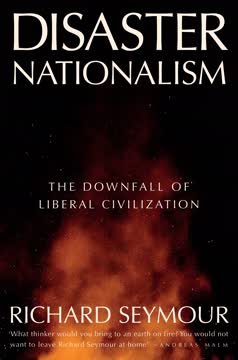

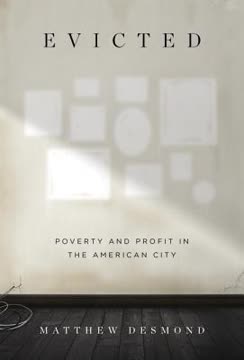
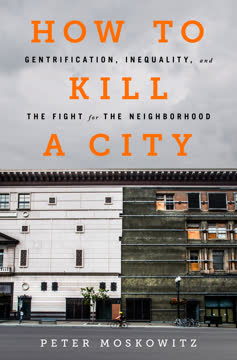
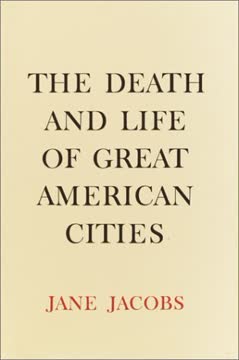
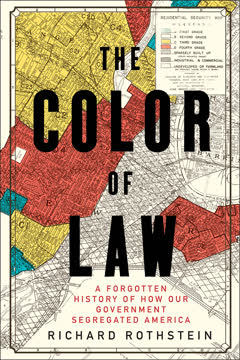
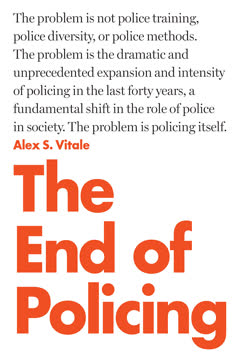
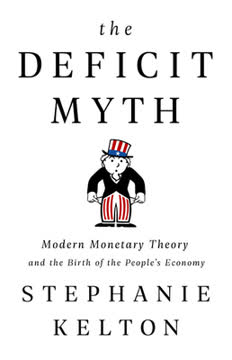
Download PDF
Download EPUB
.epub digital book format is ideal for reading ebooks on phones, tablets, and e-readers.
